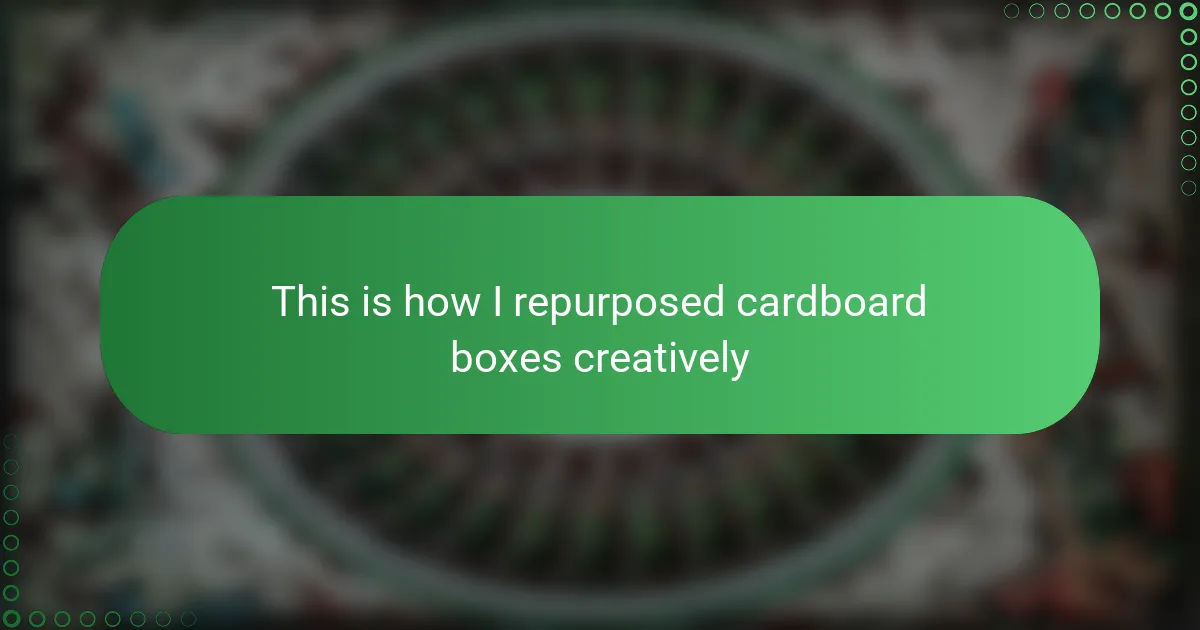Key takeaways
- Handmade paper offers a unique tactile experience, allowing for personalized and meaningful creations.
- Repurposing cardboard enhances creativity while contributing to sustainability by reducing waste.
- The right tools and techniques, such as scoring and layering, greatly influence the outcome of cardboard projects.
- Finishing touches like sanding and sealing can significantly enhance the visual appeal and longevity of cardboard crafts.
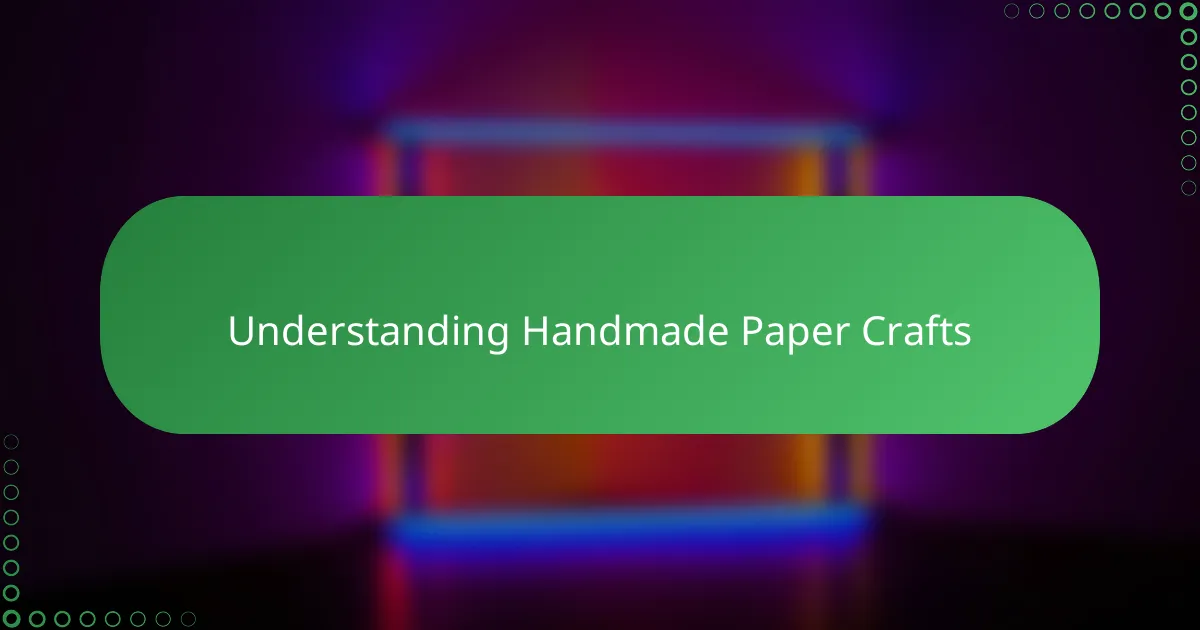
Understanding handmade paper crafts
Handmade paper crafts are more than just a hobby to me; they’re a way to connect with materials on a deeper level. Have you ever noticed how the texture and weight of handmade paper feel different from machine-made sheets? That tactile experience brings a sense of authenticity and warmth to any project.
What fascinates me about handmade paper is how it can transform simple fibers into a beautiful, unique canvas. Each sheet holds its own story, from the choice of fibers to the crafting process, making every piece one-of-a-kind. Don’t you think that adds a layer of meaning to whatever we create with it?
I’ve found that understanding the basics of handmade paper—its origins, techniques, and characteristics—helps me appreciate the craft even more. Knowing how delicate and versatile this medium is inspires me to experiment and push creative boundaries without fear. Have you ever tried making or working with handmade paper yourself?
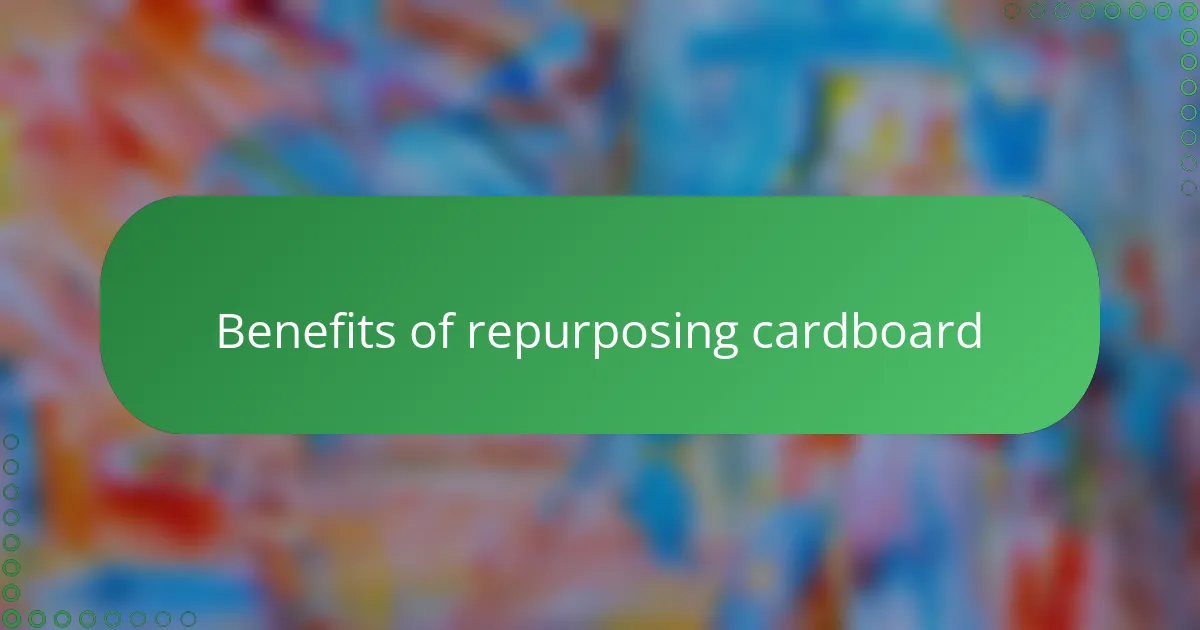
Benefits of repurposing cardboard
Repurposing cardboard has surprised me with how much it adds value beyond just saving materials. For one, it’s incredibly satisfying to see something destined for the trash transform into a useful or decorative piece. Have you ever felt that spark when you take a plain box and give it a new life? That feeling alone makes the effort worthwhile.
What truly stands out to me is the environmental impact. Using cardboard again means fewer resources wasted and less landfill clutter, which feels like a small but meaningful step toward sustainability. I’ve noticed that even small actions like these can boost my motivation to live more eco-consciously—how about you?
Plus, cardboard’s versatility is impressive. It’s sturdy enough to hold shape but also easy to cut and shape, making it a playground for creativity. I often find myself brainstorming ideas just because I have a stack of boxes waiting nearby, ready to become something special. Isn’t it amazing how one humble material can open so many creative doors?
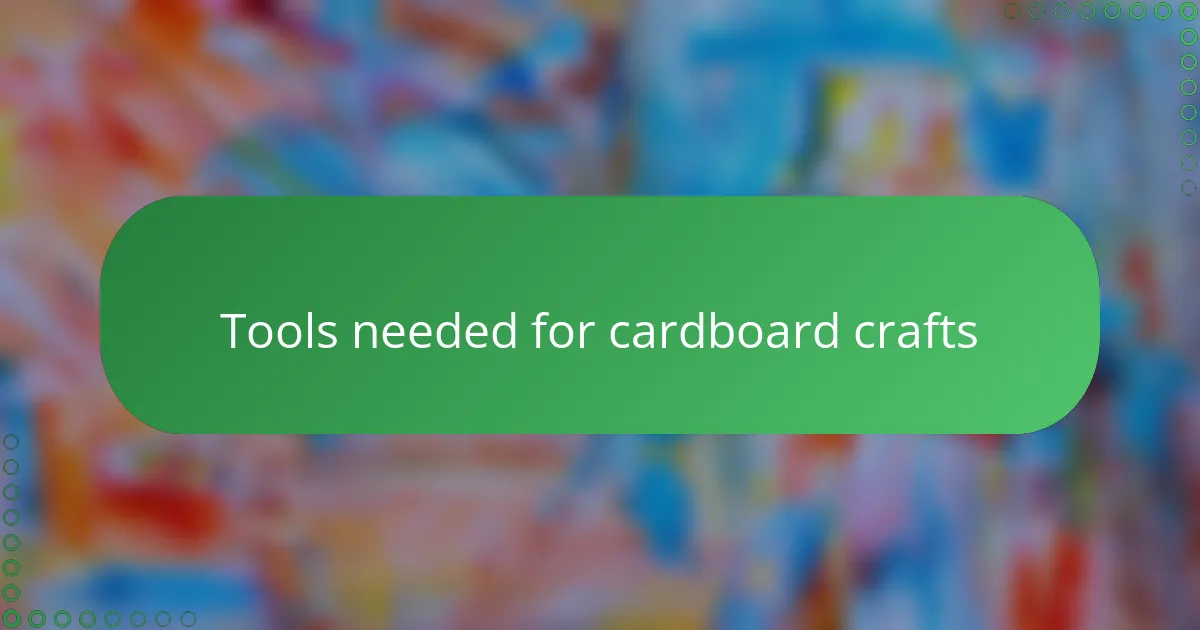
Tools needed for cardboard crafts
When I start a cardboard project, having the right tools makes all the difference. A sharp utility knife is my go-to; it cuts through thick cardboard like butter, giving me clean edges every time. Do you know that satisfying snap when the blade slices through the layers so effortlessly?
Besides cutting, I always keep a metal ruler handy. It helps me measure with precision and doubles as a guide for straight cuts—no more jagged lines ruining my design. Sometimes, I wonder how I managed without it, especially when tackling intricate shapes.
For assembling pieces, glue sticks work well for lightweight parts, but I’ve found hot glue guns essential for sturdier joins that need to hold firm. Watching the melted glue set quickly and keep everything in place never fails to boost my confidence during complex builds. Have you tried using a hot glue gun for your crafts yet?
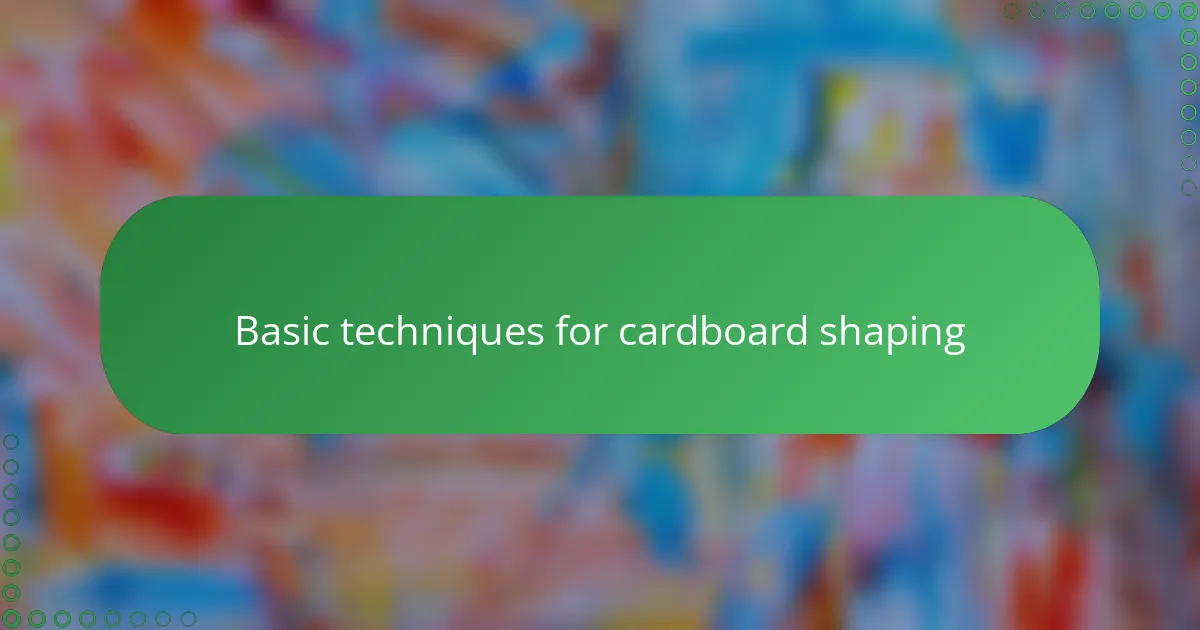
Basic techniques for cardboard shaping
Shaping cardboard often starts with scoring, which is simply making a light cut or indentation to guide where the cardboard will fold. I’ve found that scoring feels like giving the material a gentle nudge, helping it bend more predictably without cracking. Have you ever tried this? It’s incredibly satisfying to see a crisp, clean fold take shape instead of a messy bend.
Another technique I rely on is soaking or lightly dampening the cardboard to make it more flexible. It’s a bit like coaxing the fibers to relax and play along with your design. I remember once soaking pieces overnight to craft a curved lampshade frame—it taught me patience but the smooth curves were worth every minute. Do you think giving cardboard this extra care could open up new possibilities?
When it comes to shaping more complex forms, layering thin strips glued edge to edge has worked wonders for me. It’s almost like building a three-dimensional puzzle, piece by piece, until the final shape emerges. This method not only strengthens the structure but lets me experiment with curves and angles that rigid sheets wouldn’t allow. Have you tried layering as a way to achieve unique shapes?
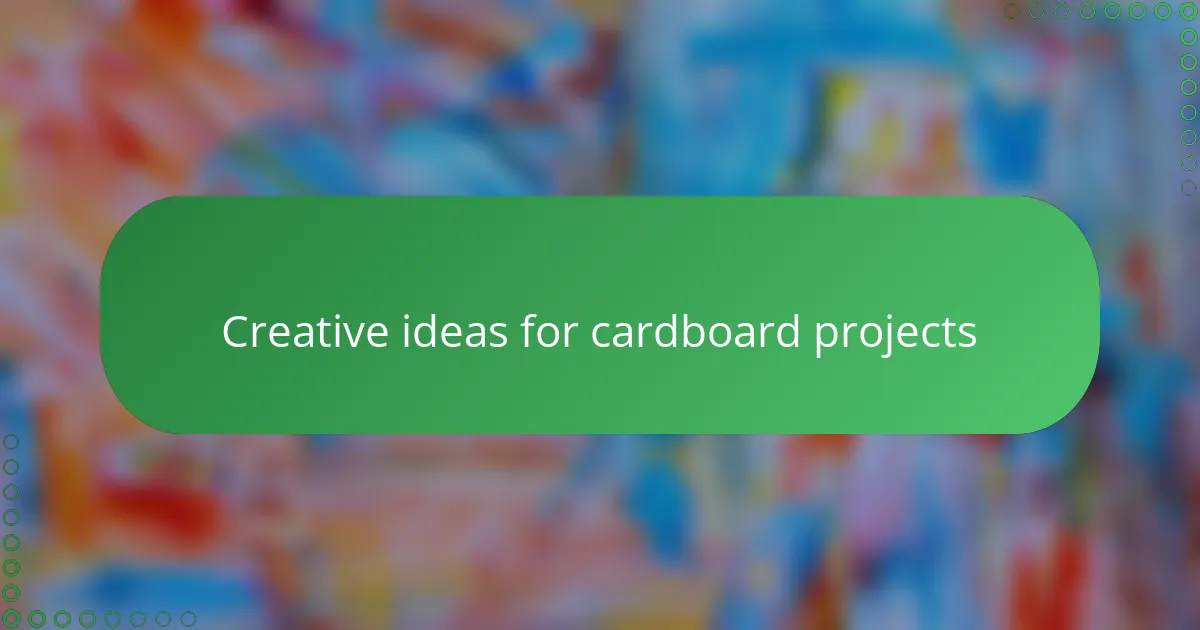
Creative ideas for cardboard projects
One of my favorite cardboard projects has been creating decorative storage boxes by cutting and reassembling pieces into nested shapes. It’s amazing how simple folds and glued edges can turn a plain box into an elegant organizer. Have you ever been surprised by how a slight redesign can completely change the vibe of an everyday item?
Sometimes, I experiment with making cardboard wall art by layering different textures and colors of recycled cardboard sheets. The possibilities feel endless when you start playing with cutouts and patterns—it’s like giving old materials a new voice. I bet you’d enjoy the tactile richness and the visual depth this technique brings to your space.
For a fun challenge, I once built a small cardboard chair using reinforced layers and clever scoring for bends. It wasn’t just a craft; it became a statement about sustainable creativity and resourcefulness in my home. Have you considered that these projects can be both practical and deeply meaningful?
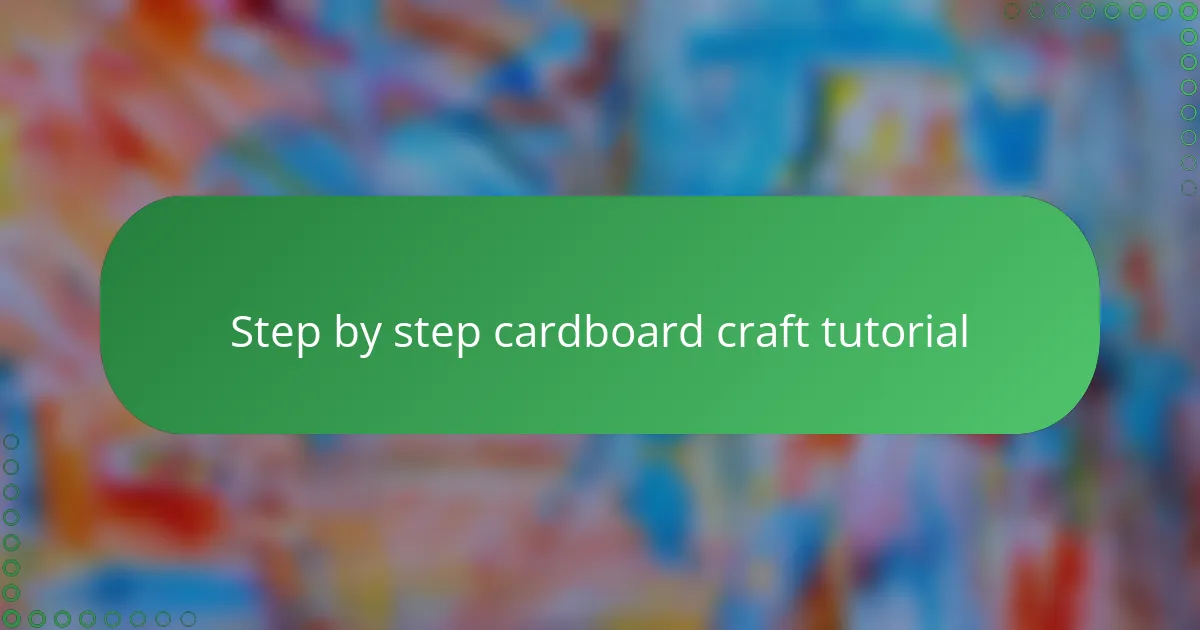
Step by step cardboard craft tutorial
Taking on a cardboard craft project step by step really changed how I approach handmade creations. I usually start by sketching a simple design to guide my cuts and folds, which keeps me focused and confident as I go along. Do you ever notice how a clear plan can turn even the messiest pile of cardboard into something exciting?
Once I have my design, I carefully cut the pieces using my trusty utility knife, making sure each edge is precise. It feels almost like carving, and every clean cut gives me a little thrill—like I’m sculpting raw material into art. Have you tried slowing down at this stage to really connect with your cardboard and see its potential?
Assembling is where the magic truly happens for me. I gently score fold lines to get sharp bends, then glue everything together in stages, letting each part dry before moving on. This paced approach saves frustration and lets me appreciate how each piece comes alive, transforming from flat sheets into a three-dimensional creation. Doesn’t that moment when it all starts to stand up feel incredibly rewarding?
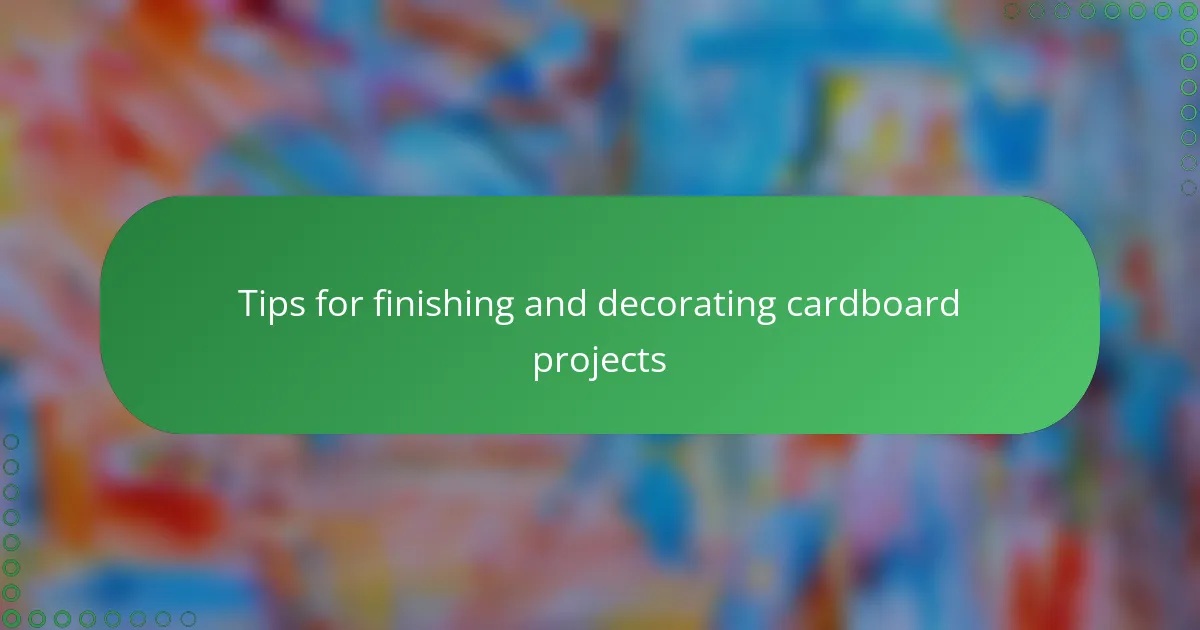
Tips for finishing and decorating cardboard projects
Finishing cardboard projects always feels like the final touch that turns a rough idea into something special. I’ve learned that sanding edges lightly smooths any roughness and makes the piece feel polished. Have you noticed how even a little bit of gentle sanding can elevate the overall look and make your project look professionally crafted?
When it comes to decorating, I often reach for acrylic paints because they stick well and add vibrant color without soaking into the cardboard. Sometimes, I mix in stencils or stamps to add patterns that catch the eye and bring personality. Have you tried layering different paint techniques? It can create texture and depth that surprise even me.
Sealing your finished piece is something I don’t skip. A simple coat of varnish or clear glue not only protects your work from wear but also adds a subtle sheen that makes colors pop beautifully. I remember the first time I sealed a box and was amazed at how it heightened every detail. Do you think finishing touches like this make your crafts stand out even more?
